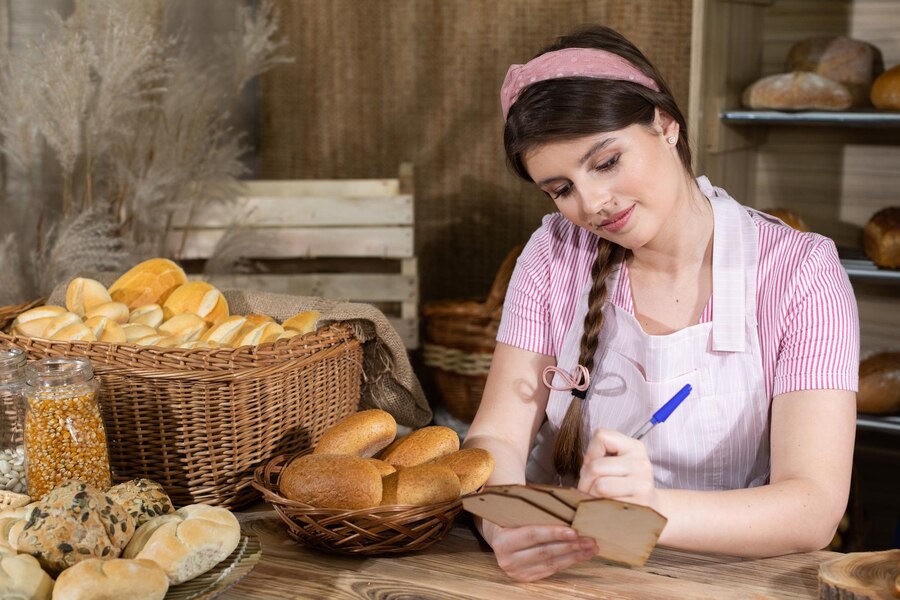Introduction
Bread is a staple in many diets around the world. Creating the perfect loaf at home can bring immense satisfaction and elevate any meal. Whether you’re a professional baker, a dedicated foodie, or a home cook eager to hone your skills, bread making offers a rewarding challenge. This post will guide you through the essentials of creating outstanding homemade bread, offering tips and troubleshooting advice to ensure every loaf is a success.
Essentials of Bread Making
The foundation of any great bread lies in its ingredients. At the core, you’ll find flour, water, yeast, and salt—each playing a crucial role in flavor and texture. Flour type, in particular, is a significant factor. All-purpose flour is versatile, but experimenting with bread flour or whole wheat can yield different textures and flavors. Hydration levels also influence bread’s texture. A higher water content can lead to a more open crumb structure, perfect for airy artisan loaves.
Yeast is the driving force behind fermentation, affecting everything from flavor to rise. There are different types of yeast available, including active dry, instant, and fresh yeast. Each has its own characteristics and requires specific handling. Understanding these differences can help you tailor your bread making techniques to achieve the best results.
Tips for Perfect Bread
Kneading is an essential skill in bread making. It develops gluten, which gives bread its structure. Knead until the dough is smooth and elastic, a process that usually takes 10-15 minutes by hand. Proofing, or allowing the dough to rise, is another critical step. Proper proofing ensures your bread has the right texture and volume. Temperature plays a crucial role here; a warm environment can speed up proofing, while cooler conditions slow it down, contributing to flavor development.
Shaping and scoring bread is not just about appearance; it influences how the bread bakes. Scoring allows steam to escape, preventing the loaf from splitting uncontrollably. Practice different scoring patterns to not only create visually appealing bread but also to improve its ability to expand during baking.
Troubleshooting Common Bread Baking Issues
Even experienced bakers encounter challenges. One common issue is dough that doesn’t rise as expected. This could be due to expired yeast, or the dough might be too dense. Check your yeast’s freshness and ensure proper hydration levels. Signs of underproofed dough include dense texture and small, compact crumb. Conversely, overproofing leads to a flat loaf with little rise. Timing and temperature management are your best tools in avoiding these pitfalls.
Achieving a good rise and open crumb structure requires the right balance of ingredients, time, and technique. Don’t be discouraged by initial failures; each attempt is a learning opportunity that brings you closer to mastering homemade bread.

Enhancing Bread Flavor and Texture
To elevate your bread, consider adding flavors such as herbs, spices, or nuts. These elements can transform a basic loaf into something extraordinary. Experiment with combinations like rosemary and olive oil or cinnamon and raisins for sweet bread.
For those interested in sourdough, the fermentation process offers distinct flavors and textures. Sweet breads, like brioche or challah, incorporate eggs and sugar for a rich, tender crumb. Mastering these variations broadens your baking repertoire.
Steam plays a crucial role in achieving a crispy crust. Professional bakers often use steam ovens, but at home, you can replicate this by placing a pan of water in the oven. The steam helps the dough expand before the crust hardens, resulting in a beautiful, blistered surface.
Storage and Serving Suggestions
Freshness is key when enjoying homemade bread. Store your bread in a paper bag or a bread box to maintain its crust while preventing staleness. If you find yourself with stale bread, don’t discard it. Stale bread can be repurposed into croutons, breadcrumbs, or a delicious bread pudding.
When serving your bread, consider pairing it with quality olive oil, balsamic vinegar, or artisanal cheeses. These accompaniments enhance the taste and bring out subtle flavors in the bread, turning a simple slice into a gourmet experience.
Conclusion
Creating the perfect loaf of bread is both an art and a science. By understanding the essentials, refining your techniques, and troubleshooting common issues, you can elevate your bread making skills. Experiment with flavors and styles to find what resonates with you and your family. We encourage you to share your bread making experiences and join our community of bakers. Remember, each loaf tells a story—yours is just beginning. Share this post with fellow enthusiasts and let’s bake our way to perfection together!



